Near-Mage review
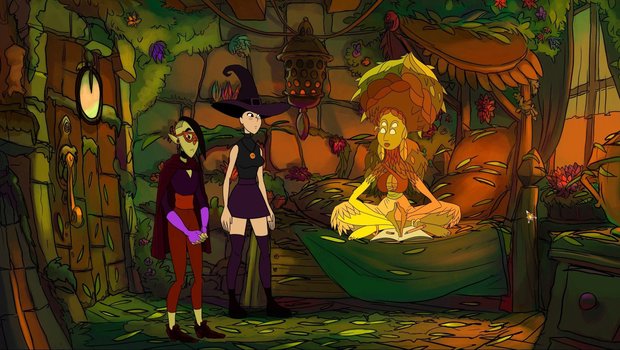
- 2 Comments
The creators of Gibbous conjure up a charming new puzzle-lite but visually stunning magickal adventure for wannabe witches
Note: Since time of writing, a "No Hand-Holding" update has been implemented, making the display of on-screen objectives optional.
Faced with the uncertainty of her future, 18-year-old Illinca “Illy” Vraja is struggling at a crossroads, and her parents aren’t shy about reminding her of that. Just in time, Illy receives a letter showing her a path forward. (Well, it flies in through her window.) On ivory parchment with a red wax seal, it’s an alluring invitation: spend the summer in Transylvania with her quirky great-aunt Domnica. Looking for a sign, Illy takes it and is whisked away on a magickal Romanian adventure, where she will attend the Transylvanian Institute for Magick, explore atmospheric locales, assist human and not-so-human townsfolk, and track down a mysterious, looming dark force.
Near-Mage is a visually stunning and heartfelt narrative-driven game that blends the charm of point-and-click adventures with the questing of RPGs, all wrapped up with a delightful magickal bow and a coming-of-age story about finding your way and belonging. Merging beautiful settings, vibrant characters, standout voice acting, and a satisfyingly bouncy orchestral soundtrack conjures a joyful treat for the senses and a welcome whimsical expansion of Transylvanian developer Stuck In Attic’s “Kittehverse” established in their previous release, Gibbous: A Cthulhu Adventure. While Near-Mage is not nearly as challenging as its predecessor in terms of gameplay, it shines in its ambiance, charm, and delightful details.
Illy arrives in Sighisoara, greeted by the gorgeous, storybook streets of Transylvania. The town is bright, colorful, and full of whimsy. Locals and tourists fill the streets, and each one is thoughtfully designed and animated. This is one of the first point-and-click adventure games where I genuinely felt like every scene was brimming full of life, just like a real city would be (à la Richard Scarry’s Busytown illustrations.)
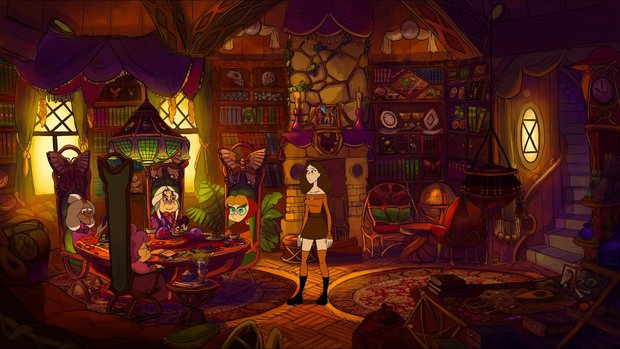
The rooms in Near-Mage are all deliciously hand-painted, and they’re absolutely stunning. Each background felt like something I’d want to frame as a print on my wall—beautiful and full of detail. The main plaza of Sighisoara is paved with stone pathways and lined with yellow, green, and red houses and shops bathed in warm sunlight. Illy’s bedroom is drenched in cozy blues and greens with a huge circular window overlooking the city, with a view of the central clock tower scraping a cloudless sky. Domnica’s living room is a maximalist’s dream, covered in bookshelves brimming with leather-bound tomes, goblets, skulls, and knickknacks, while the sun beams down onto her green butterfly-flocked chairs around a card table sprinkled with magickal trinkets.
And for anyone like me who loved playing dress-up games as a kid, you can customize Illy’s outfit as many times as you’d like to match the vibe of your favorite locales by revisiting her wardrobes. While there’s no altering the base character design, you can change Illy’s hairdo, accessories, jacket, top, bottoms, socks, and shoes and toggle between different colors for each item. My favorite outfits included my classic witch look, whose centerpieces were a deep plum-colored pointy hat and stompy black boots, and my bubblegum Glinda-inspired look with long lavender hair alongside a pink long sleeve shirt and knee socks, a white skirt, and maroon sneakers. I especially enjoyed that time was taken to animate each outfit and hair style with Illy’s walk and run, so you can have swishing braids and bouncing curls as you explore.
United with great-aunt Domnica, Illy starts out in Sighisoara but as she gets to know the locale, her adventures draw her toward a folkloric tale involving the hidden alternate-dimension magickal city of Rakus. It has to just be a story… or is it? Of course not! This is a game about mages, after all. Domnica reveals that she herself attended the magickal school there that trains near-mages, and made quite an impression. With her great-aunt’s guidance and a special coin that signifies her magickal family lineage, Illy is able to enter Rakus through a magickal portal and ultimately enroll in the Institute for Magick, beginning her journey to becoming a mage.
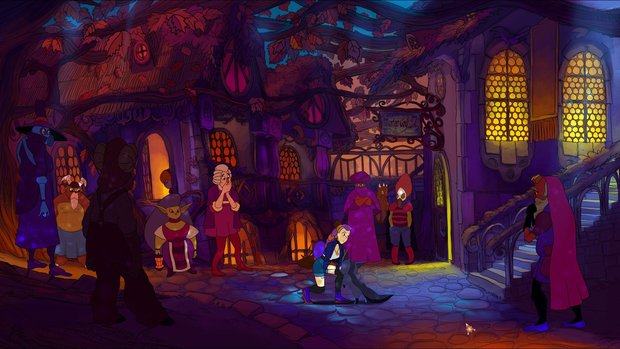
Rakus is equally charming and lush as Sighisoara, but this place is filled with magickal creatures, mages, and perhaps a bit of mysterious evil lurking about. Think the warmth and quirkiness of the Disney Halloweentown series, one of my favorites from childhood. Rakus is larger than Sighisoara, and is where players will spend most of their time. I do wish a bit more was spent in Sighisoara because it is so beautiful. I particularly enjoyed the few quests that require Illy to spend time in both, since following objectives across the portal really adds to the unique feeling of place. Players can travel between worlds through the portal with ease, and move through each environment by clicking to walk and run, or fast travel via a very convenient and lovingly illustrated set of maps that becomes available once Illy has learned a flying spell at school.
To help her on her quest, Illy is periodically invited to attend classes at the Institute for Magick by mitzkins—flying magickal creatures that carry scrolls in their beaks. Mitzkins are adorable, and there are a plethora of other cute, magickal and non-magickal creatures throughout the entire game, like Illy’s shadow fox Mist and a mysterious barking cat who sullenly lounges on a wall in Sighisoara. There’s no question the Stuck In Attic team is quite fond of fuzzy friends.
When attending class, players choose which type of magick to study to earn a near-spell: earth, water, wind, fire, soul, or blood. You must attend every class to complete your studies, but it’s up to you how early or late you learn a type of near-spell. Each magick has its own professor, designed to reflect their area of study, who gives a short speech about their specialty. These cutscenes lean more towards slam poetry than what you’d typically expect from a lecture. Afterwards, you’ll answer three quiz questions based on the speech you just heard. The questions are simple, but they do require paying attention to the dialogue. If you miss something, you can rewatch the lecture to try again.
After successfully completing a class, Illy unlocks a new type of magick to use in crafting spells. Spells are created by combining three near-spells; for example, after learning water, wind, and soul near-spells, you can craft a snow spell. Spells are made in the magick menu by arranging your chosen near-spells, the name of the spell from a handy spellbook appearing at the bottom, and holding down a “craft spell” button. Right-clicking brings up an interactive spell wheel while Illy is in Rakus, but it seems that spells are only usable during certain quests. When a spell is available to help with an objective, Illy’s magick coin necklace glitters to signal its potential. I wish there were more opportunities to use magick meaningfully, rather than just when your objectives specifically allow it as an option. That said, using magick is often optional and is looked down upon by some characters in Rakus. How you decide to solve problems is documented, and even impacts your ultimate path in the game.
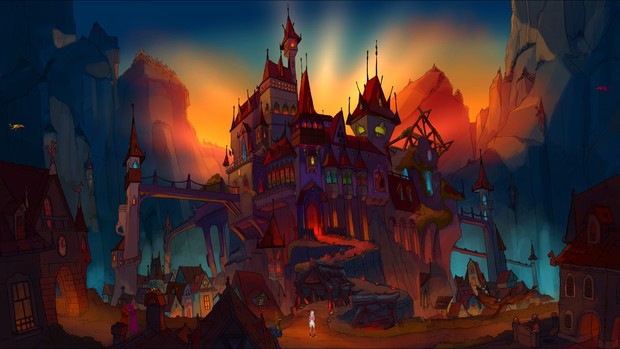
Besides using the right spell at the proper place and tracking down items and characters, there isn't really much focus on puzzles, which might surprise fans of Gibbous, a game packed densely with classic adventure-style puzzles. Near-Mage takes a different approach; one that focuses more on storytelling and world-building than anything else. There is not a classic inventory; you may be given or find items in your travels, but they are not accessible to look at afterwards or attempt to use manually. A few quests require thinking about where to go to trigger an object’s use as needed, but most puzzles are simpler, observational tasks where you track down a character or gather a set of items.
Episodic quests are the main gameplay format, from finding ingredients for a potion Illy needs to craft in class, to reuniting two estranged brothers, to helping safely remove fiery creatures from an attic to avoid further disaster. Early in the game, your goals seem straightforward and sometimes menial, but they begin to build into a larger, overarching story as the game progresses. The turning point comes from a very distraught Institute librarian: a lock to a heavily secured storage room has been broken and a powerful book that tracks where magickal artifacts are hidden has been stolen. In the wrong hands, a tracker like this could be very dangerous. Illy offers her help in hunting down the thief, setting her off on a quest that sends her and her friends down some of Rakus’s darker paths.
Many of the shop owners become mainstays in your quests, like my favorite NPC Visarion, who owns the bookshop and appears as a cat with distinctly colored eyes and an un-useful human lounging behind him, and Najil the knowledgeable plant shopkeeper and skilled mage. Illy also makes friends at the Institute who help her out, like Tudor, vampyre near-mage and son of Professor Strigoi. The characters in Near-Mage are all lovingly voiced, with distinct characterization and undeniable charm. Illy’s voice is bright and driven, Tudor’s has the hallmarks of a classic Romanian vampyre combined with angsty teenager, and the shopkeepers and professors range from gruff to kindly and wise. The dialogue writing is down-to-earth and often sweet, driven by Illy’s natural care and interest in others, and makes room for light funniness and silliness without resorting to full-on caricatures. There are usually three choices in how Illy responds to characters, showing off her edgier and kinder sides.
Near-Mage took me about 13 hours to complete, diligently following the quests as they became available to me and mostly utilizing fast travel. (Okay, yes, unless I was busy changing Illy’s outfit.) The game is easy to enjoy in short sections and then pick up later, given its quest-based gameplay, especially as Illy is first getting to know Sighisoara and Rakus. While I appreciate the less puzzle-heavy approach taken here, I did find myself wishing there were more opportunities for independent clue-finding. Some quests that seemed to have more puzzling potential usually came down to simple observation or just talking to the same NPCs again. Quests are tracked directly on the main screen, and a very specific task list lives on the quest page of the menu.
The level of hand-holding is amplified later on with a barrage of mitzkins summoning you to the next parts of your quests. Even the dialogue recognizes the lack of gracefulness here, with Illy exclaiming “that was fast!” so I imagine the developers were aware that it’s a bit much as you near the ending. The final act of the game is a meaningful conclusion of Illy’s emotional arc, uniting her with her closest friends and confidants in a final confrontation where player choices matter.
Final Verdict
While playing Gibbous isn’t required to enjoy Near-Mage, having completed (and openly wept over) it enhanced my experience here. This isn’t a sequel, but the games are undeniably intertwined and there are many familiar cameos and references to appreciate. Even for newcomers, however, Near-Mage’s emphasis on immersion, character, and worldbuilding makes it a memorable and rewarding experience. It’s a love letter to magickal coming-of-age stories bubbling with charm, narrative depth, and gorgeous visual storytelling. Some players may long for more gameplay complexity, but everything this game offers is heartfelt and polished. With richly voiced characters, whimsical writing, and an unforgettable setting, it invites you into a magickal world you’ll be reluctant to leave. Whether you’re a fan of Gibbous or new to Stuck In Attic’s enchanted corner of the adventure gaming world, Near-Mage is worth the trip to Transylvania.
Hot take
Near-Mage will cast a powerful spell on fans of narrative-driven adventures. While it may not challenge puzzle wizards, it will enchant players with its beautifully vibrant locales and heartfelt tale of finding one’s place in the world.
Pros
- Hand-painted visuals are breathtaking
- Heartfelt coming-of-age story rooted in Romanian folklore
- Voice acting brings every expertly designed character to life with distinct personality
- Magick system is tactile without being overly complex
- Immersive worldbuilding makes the settings feel vibrant and lived-in
Cons
- Too much hand-holding limits discovery and challenge
- Some of the quests feel menial or simplistic
- Use of magick is underutilized
Jenna played Near-Mage on PC using a review code provided by the game's publisher.


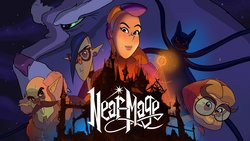








2 Comments
Want to join the discussion? Leave a comment as guest, sign in or register.
Guys, this 'day 1 review' tradition for high profile games is amazing. Thanks for the great work!
Reply
Playing this right now! The backgrounds look gorgeous and it's nice to recognize the Eastern European influence. The game is not very interactive, though. Barely any hotspots or dialogue options.
Reply
Leave a comment